You may think you've mastered Bollinger Bands, but there's always room for improvement. By implementing these seven key tips, you can refine your usage and take your trading to the next level.
From fine-tuning settings to optimizing strategies, each tip holds the potential to elevate your trading game and unlock new possibilities in the market. Stay tuned to uncover the secrets that could make a significant difference in your Bollinger Bands application.
Understanding Bollinger Bands Essentials
To grasp the fundamental concepts of Bollinger Bands, focus on understanding how this technical analysis tool comprises a simple moving average, upper band, and lower band. Bollinger Bands are a valuable tool for analyzing price movements, with the upper and lower bands serving as indicators of price volatility and potential overbought or oversold conditions.
Traders often use Bollinger Bands to identify trend reversals and extreme market conditions, making it a crucial element in their trading strategies. Being near the bands can signal potential trading opportunities, especially when combined with other technical indicators.
Their adaptability to various assets and timeframes enhances their usefulness in different market scenarios, making them a versatile tool for traders looking to make informed decisions.
Customizing Bollinger Bands Settings
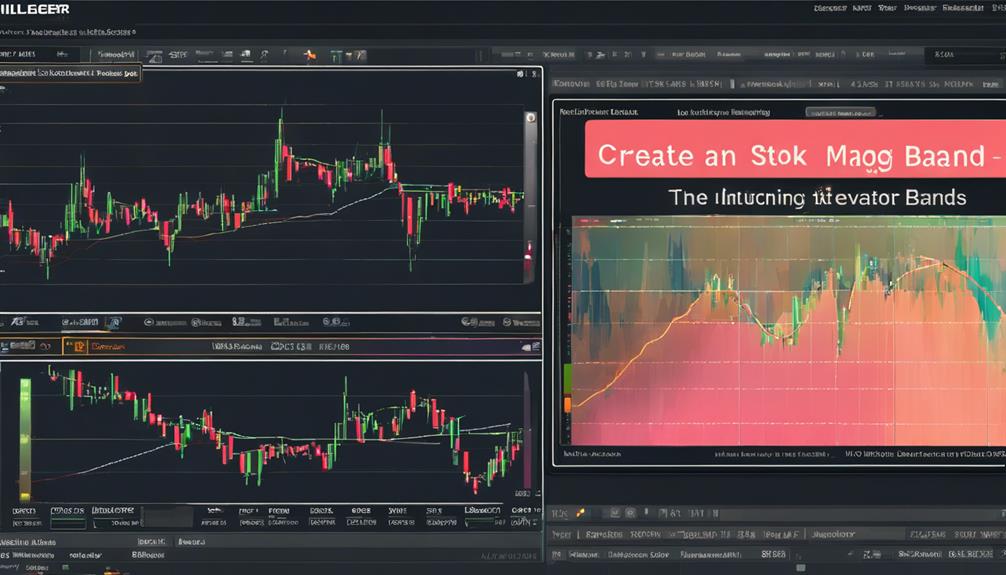
Customizing Bollinger Bands settings involves adjusting lookback periods and standard deviations to tailor the analysis to your trading strategy and preferences. Longer lookback periods result in smoother Simple Moving Averages (SMAs), aiding trend analysis. Increasing standard deviations widens the bands, reducing false signals, which is especially useful in volatile markets.
Experimenting with different moving average types, such as exponential or weighted moving averages, can enhance responsiveness to price fluctuations. By customizing these settings, traders can adapt Bollinger Bands to suit their specific trading strategies and preferences effectively. This flexibility allows for a more personalized approach to utilizing Bollinger Bands in analyzing market trends and making informed trading decisions.
Utilizing Bollinger Bands Scanners

When utilizing Bollinger Bands scanners, you can customize various options to filter stocks effectively. These scanners provide real-time alerts when stocks breach the bands, offering potential breakout or reversal signals.
Additionally, backtesting historical data using these scanners can enhance your understanding of how different stocks behave in relation to Bollinger Bands.
Scanner Customization Options
Begin by selecting specific criteria for your Bollinger Bands scanner to scan for, such as price movements crossing upper or lower bands. Customizing your scanner can help you identify trading opportunities more efficiently.
Consider setting scanning parameters for specific timeframes like daily, weekly, or intraday to capture different market movements. Utilize the scanner to pinpoint potential trade setups based on volatility and price action.
Additionally, filter scan results based on volume spikes or specific technical indicators to enhance your trading decisions.
- Set custom criteria for price movements
- Choose specific timeframes for scanning
- Identify trading opportunities based on volatility
- Filter results using technical indicators
Real-Time Signal Alerts
To optimize your trading efficiency and responsiveness, leverage real-time signal alerts provided by Bollinger Bands scanners. These scanners monitor price movements relative to the bands, alerting traders to potential trading opportunities when prices touch or breach the bands.
Alerts can be customized based on specific criteria like band width, price crossing bands, or squeeze conditions. By setting up notifications for different timeframes, you can stay informed about market conditions and act swiftly.
Utilizing Bollinger Bands scanners allows you to efficiently monitor multiple securities simultaneously, aiding in timely decision-making. Take advantage of these real-time alerts to seize profitable trading opportunities as they arise.
Backtesting Historical Data
Backtesting historical data with Bollinger Bands scanners enhances your trading strategies by evaluating past price action against specific criteria to optimize decision-making. By utilizing Bollinger Bands scanners for backtesting, you can identify trading opportunities and refine strategies effectively.
Here are some key points to consider:
- Analyze past price action with Bollinger Bands settings to refine trading strategies.
- Use backtesting to validate Bollinger Bands signals and patterns against historical data.
- Utilize backtesting tools to optimize strategies by testing different Bollinger Bands configurations.
- Assess historical data with Bollinger Bands scanners to improve decision-making and maximize trading opportunities.
Practical Applications of Bollinger Bands
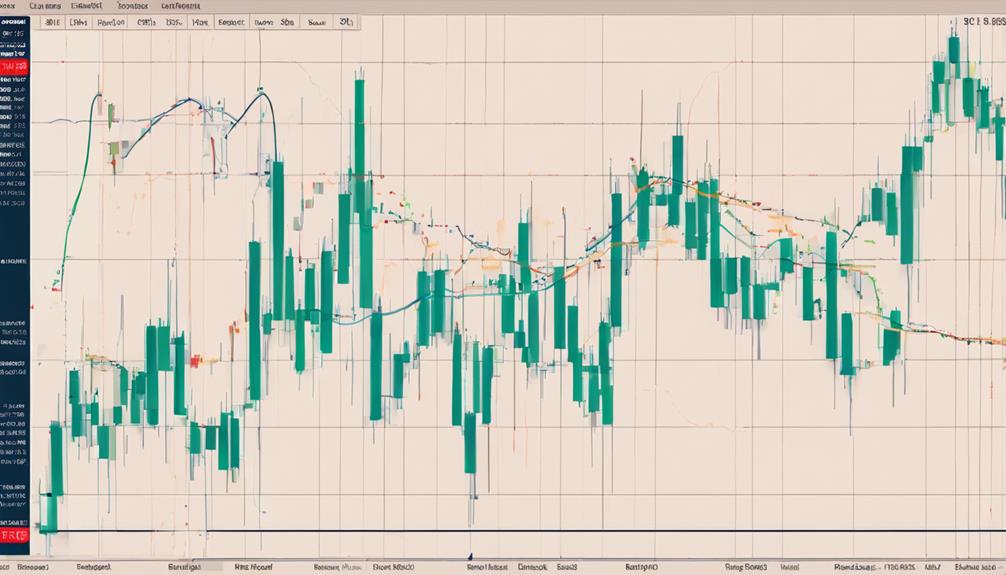
Practical applications of Bollinger Bands involve utilizing their ability to gauge market volatility and identify potential price reversals. Bollinger Bands help measure volatility by showing band widening or contraction, aiding in spotting high and low volatility periods.
They also assist in identifying market trends based on their position relative to the middle band. By observing breaches of the upper or lower bands, traders can potentially predict price reversals.
Moreover, Bollinger Bands enable the determination of overbought and oversold conditions, presenting trade opportunities for investors. These bands offer valuable insights into both price and volatility, empowering traders to make informed decisions during varying market conditions.
Effective Bollinger Bands Trading Strategies
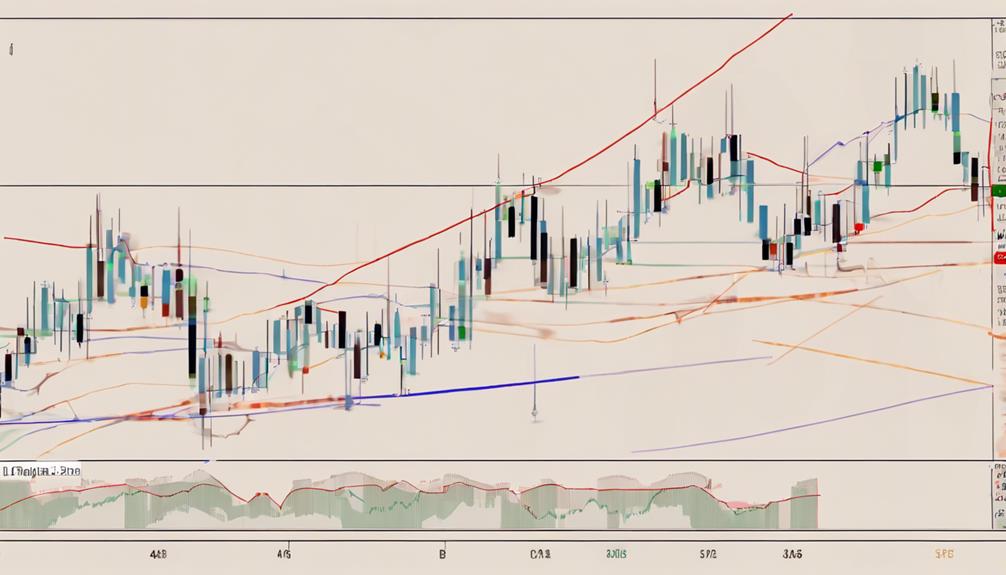
Enhance your trading proficiency by implementing effective Bollinger Bands strategies that capitalize on market volatility and trend identification. When using Bollinger Bands in your trading strategies, consider the following:
- Bollinger Band Squeeze strategy: Identify low volatility periods to anticipate potential breakouts.
- Bollinger Band Breakout strategy: Confirm trend continuation by observing breaches of the upper or lower bands.
- Bollinger Band Walks: Trade along the bands during strong trends to determine optimal entry and exit points.
- Combining with indicators: Utilize tools like Bollinger %B and Bollinger Bandwidth to enhance analysis accuracy.
Incorporating these strategies can provide valuable insights into market trends, potential price reversals, and help in determining entry and exit points effectively.
Enhancing Signals With Other Indicators
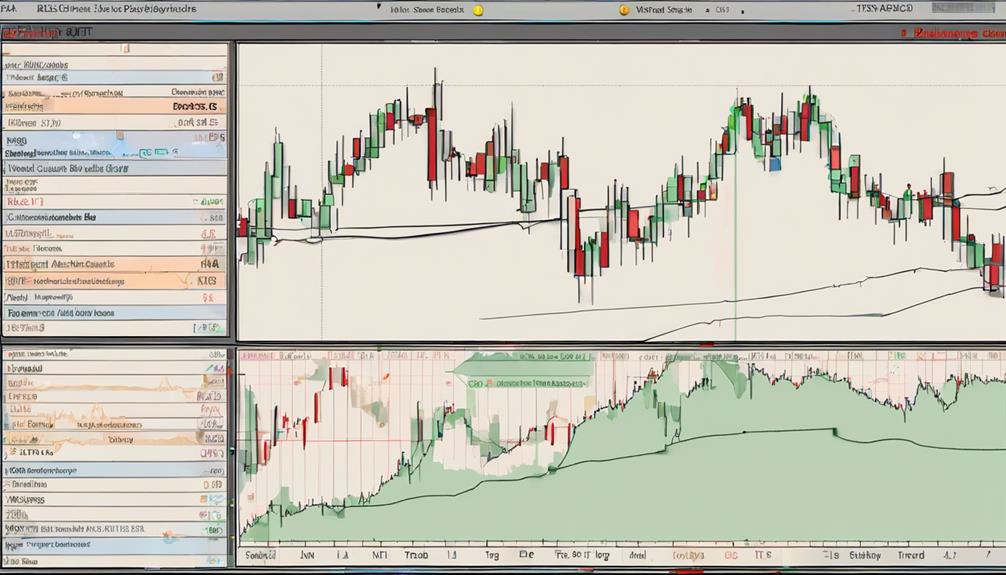
To further refine your Bollinger Bands trading strategies, consider enhancing your signals by incorporating additional indicators that complement and strengthen your analysis.
Combining Bollinger Bands with the Relative Strength Index (RSI) can help confirm overbought or oversold conditions for more robust signals.
Using the Moving Average Convergence Divergence (MACD) alongside Bollinger Bands enhances trend identification and confirms momentum.
Incorporating the Stochastic Oscillator with Bollinger Bands can pinpoint potential reversal points and validate trading signals effectively.
Adding the Average True Range (ATR) indicator to Bollinger Bands offers insights into price volatility, aiding in setting appropriate stop-loss levels.
Utilizing volume indicators like On-Balance Volume (OBV) in conjunction with Bollinger Bands validates price movements and strengthens trading decisions.
How Can I Make the Most of Bollinger Bands for Effective Trading?
To make the most of Bollinger Bands for effective trading, it’s important to understand the best Bollinger Bands utilization techniques. These include identifying overbought and oversold conditions, using Bollinger Bands in conjunction with other indicators, and paying attention to Bollinger Band squeezes for potential price breakouts.
How Can I Use Bollinger Bands Effectively in my Trading Strategy?
To effectively utilize Bollinger Bands indicator techniques in your trading strategy, start by understanding the basics of how they work. Use the bands to identify potential entry and exit points, as well as to gauge market volatility. Additionally, combine the indicator with other technical analysis tools for more accurate trading decisions.
Tips for Bollinger Bands Success
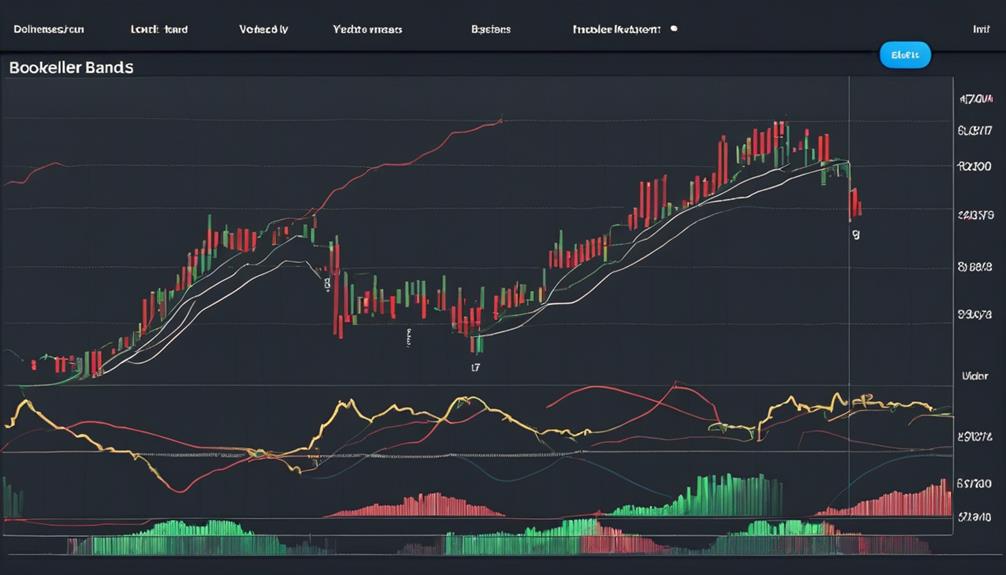
For optimal success with Bollinger Bands, adhere to the standard 20-day simple moving average setting for accurate assessment.
To enhance your understanding and utilization of Bollinger Bands, consider the following tips:
- Customize band width by adjusting the number of standard deviations for improved volatility assessment.
- Watch for price touches on the upper or lower bands as potential overbought and oversold signals.
- Combine Bollinger Bands with other indicators for confirmation in your trading decisions.
- Utilize Bollinger Bands for both trend-following and mean reversion trading strategies to maximize their effectiveness in capturing market movements.
Frequently Asked Questions
How Do You Use Bollinger Bands Effectively?
To use Bollinger Bands effectively, identify overbought/oversold conditions by observing price touches. Enhance signals by combining with other indicators. Anticipate breakouts through band squeezes. Recognize mean reversion for price reversals. Tailor usage to timeframe for day or swing trading.
What Timeframe Do Bollinger Bands Work Best?
For Bollinger Bands, shorter timeframes like 5-minute or 15-minute charts suit day trading. Longer timeframes such as daily or weekly charts work well for swing trading. Using multiple timeframes can help confirm signals.
What Is the Best Indicator to Use With Bollinger Bands?
When using Bollinger Bands, the Relative Strength Index (RSI) stands out as the top choice. RSI helps spot overbought/oversold scenarios, confirming Bollinger Bands signals and enhancing your trade decisions. It's a powerful combo!
What Is the Best Moving Average to Use With Bollinger Bands?
For the best moving average with Bollinger Bands, consider the simple moving average (SMA). It offers a good balance of responsiveness and smoothness. Set it at a 20-day period for effective tracking of price movements.
Conclusion
In conclusion, mastering the art of Bollinger Bands requires patience and practice. Like a skilled musician tuning an instrument, fine-tuning your settings and strategies will help you harmonize with market movements.
Keep experimenting, stay disciplined, and remember that Bollinger Bands are just one tool in your trading repertoire. By incorporating these tips into your trading routine, you can navigate the markets with confidence and precision.
Keep learning, keep adapting, and keep striving for success.


